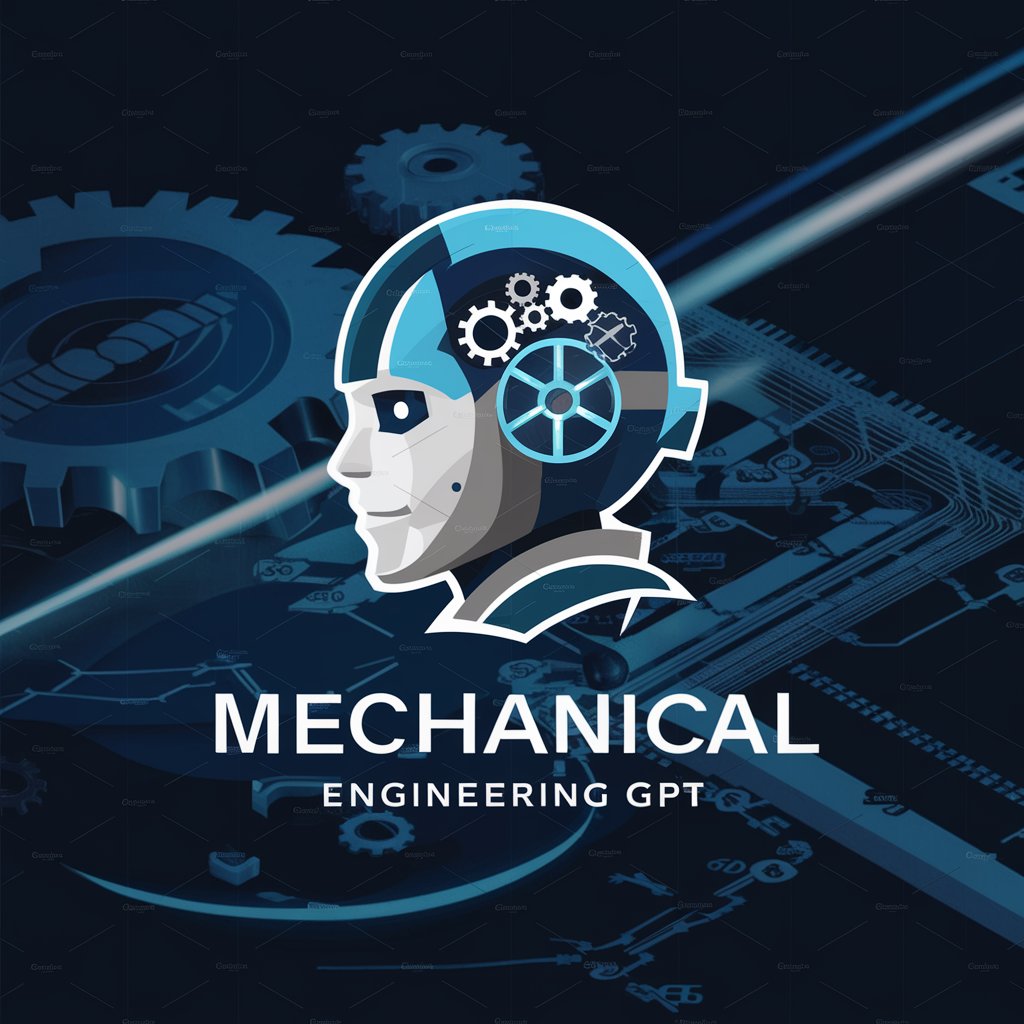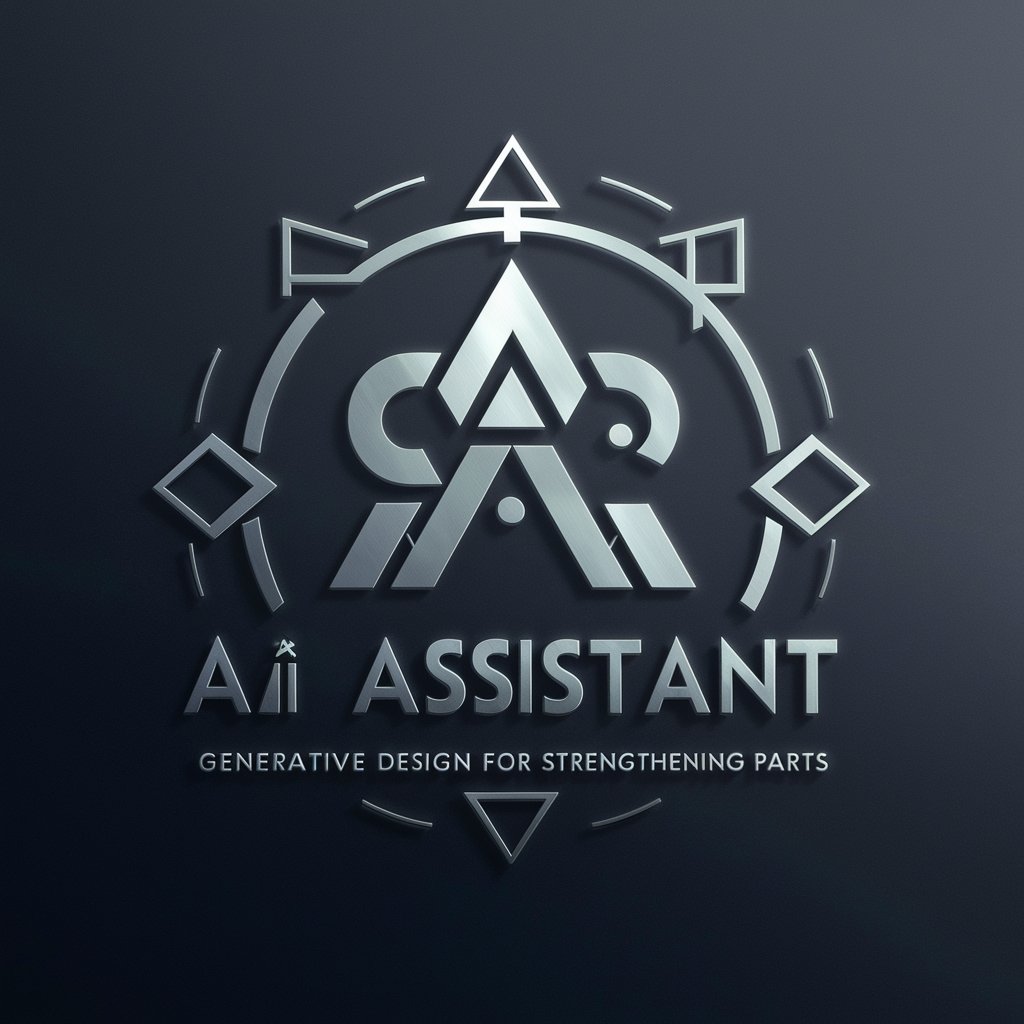Mechanical Engineering - Mechanical Engineering AI

Welcome! How can I assist with your mechanical engineering needs today?
Empowering Engineers with AI
Can you provide detailed guidance on optimizing the design of a
What are the best practices for troubleshooting issues in a
How can I improve the efficiency of a mechanical system involving
What materials would you recommend for constructing a
Get Embed Code
Overview of Mechanical Engineering GPT
The Mechanical Engineering GPT is designed to function as a specialized assistant for professionals and students within the mechanical engineering domain. Its primary role is to provide detailed, precise information and guidance on a variety of topics relevant to mechanical engineering, including but not limited to design optimization, system troubleshooting, interpretation of engineering drawings, and guidance on industry standards and safety practices. The GPT is built to offer consultations in a format that respects the complexity and precision required in engineering tasks. For example, when a mechanical engineer is working on the thermal analysis of a heat exchanger, the GPT can provide step-by-step calculations, suggest material properties, and recommend design adjustments based on specific operational conditions. Powered by ChatGPT-4o。

Key Functions of Mechanical Engineering GPT
Technical Advice and Calculations
Example
For instance, if an engineer needs to calculate the stress distribution in a loaded beam, the GPT can guide through the necessary formulas and considerations, such as material properties and boundary conditions.
Scenario
In a scenario where an engineering firm is designing a new bridge, the GPT can provide calculations for load-bearing capabilities and suggest suitable materials and cross-sectional geometries.
Material Suggestions
Example
When selecting materials for a high-temperature application, the GPT can analyze thermal properties of materials such as stainless steel or ceramics and advise on their appropriateness based on operating conditions.
Scenario
Consider a scenario in an aerospace company needing materials for jet engine components that must withstand extreme temperatures and pressures; the GPT can recommend materials based on their creep resistance and thermal fatigue properties.
Design Optimization
Example
The GPT can assist in optimizing the design of a gearbox by suggesting modifications in gear ratios or materials to improve efficiency and durability.
Scenario
An automotive engineer is looking to reduce the weight and increase the efficiency of a vehicle's transmission system. The GPT can provide insights into alternative lightweight materials and more efficient gear designs.
System Troubleshooting
Example
When a mechanical system fails, such as a hydraulic circuit experiencing unexpected pressure drops, the GPT can guide the diagnostic process to identify and rectify the issue.
Scenario
In an industrial setting where a hydraulic press is malfunctioning, the GPT can help trace the problem to specific components like seals or valves and recommend corrective actions.
Target User Groups for Mechanical Engineering GPT
Mechanical Engineering Professionals
This group includes engineers and designers who require detailed technical support in their daily tasks. They benefit from the GPT's ability to provide immediate, expert advice on complex engineering issues, thus enhancing their productivity and ensuring compliance with relevant standards.
Engineering Students
Students studying mechanical engineering can use the GPT as a learning tool to better understand theoretical concepts and practical applications. The GPT can serve as a supplemental resource, offering explanations, examples, and study aids that enhance their academic experience.
Research and Development Engineers
Engineers involved in R&D activities, especially in cutting-edge fields like robotics or renewable energy, will find the GPT invaluable for its ability to provide up-to-date information, innovative design ideas, and suggestions for experimental setups and protocols.

How to Use Mechanical Engineering
1
Access a free trial at yeschat.ai, without the need to log in or subscribe to ChatGPT Plus.
2
Select the Mechanical Engineering GPT from the available tools to start your session.
3
Input your specific mechanical engineering question or problem into the chat interface.
4
Utilize the tool’s suggestions for calculations, design optimization, and material selection as per your query.
5
Review the detailed responses and apply them to your project or study for enhanced results.
Try other advanced and practical GPTs
TTI
Streamline Operations with AI Guidance

CADesigner
Revolutionizing Design with AI

Tutor Real Estate
Empowering Your Real Estate Knowledge with AI

Virtual Psychologist
Empowering Insights, Enhanced by AI

Wasteland Architect
Build, Plan, and Survive with AI

Immersive Fallout Companion (Take JET!)
Learn coding in the Wasteland

Electrical and Computer Engineering
Empowering Innovation with AI-Driven Engineering

From the Protagonist
Bringing Characters to Life

Story Illustrator
Crafting AI-powered Epic Narratives

The best Korean conversation practice
Master Korean with AI-powered Role-Play

Auditor de TI
Empowering IT Audits with AI

Assistant en Criminalistique TI
Streamline Your Cybersecurity Education with AI

Detailed Q&A About Mechanical Engineering
What types of mechanical system failures can this tool help diagnose?
This tool can help diagnose a range of mechanical system failures including issues related to vibrations, thermal stresses, fluid dynamics problems, and material fatigue.
Can Mechanical Engineering assist in optimizing a mechanical design?
Yes, the tool offers suggestions on design parameters, simulates performance under various conditions, and recommends materials and methods to improve efficiency and durability.
How does this tool help with interpreting engineering drawings?
Mechanical Engineering provides guidance on reading and understanding different types of engineering drawings, including assembly drawings, part drawings, and system layouts.
Is there advice available on industry standards and safety practices?
Yes, the tool provides updates and explanations on relevant industry standards like ASME, ISO, and safety practices crucial to engineering work.
Can it perform complex calculations like finite element analysis?
While the tool can provide guidance on how to set up and interpret finite element analysis, actual computations should be performed with specialized software.
